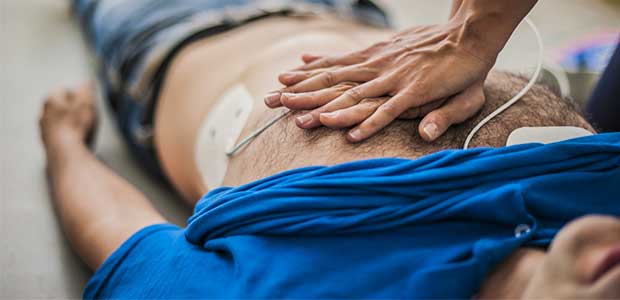
Researchers Find a "Sweeter Spot" to CPR Method
Until now, not much research had been done to find the best CPR methods from data that accounted for both compression rate and chest depth. Now, new data gives some exciting new answers.
An international research consortium has identified the optimal recipe for CPR that combined chest compression frequency with chest compression depth. The conclusions are the first to do so, since other CPR studies have not considered both aspects.
The investigation was led by an international research consortium, which included faculty members from the University of Minnesota Medical School. Sue Duval, Ph.D., Associate Professor of Medicine and Biostatistics at the U of M Medical school, led the investigation. She was assisted by an international team of resuscitation investigators based at UT Southwestern, Medical College of Wisconsin, University of Oklahoma School of Community Medicine, the University Hospital of Grenoble Alpes in France, and Toho University in Tokyo, Japan.
The study was conducted across 150 different EMS agencies in the U.S. and Canada. It reviewed more than 3,600 patients who experienced cardiac arrest outside the hospital. Compression rate and cardiac arrest were being recorded as part of a clinical trial conducted by the NIH Resuscitation Outcomes Consortium, with the use of a specific CPR device called the impedance threshold device (ITD). It was the first multicenter trial to use electronically documented measures of both chest compression rates and chest compression depth.
The findings, published in JAMA Cardiology, suggest a specific combination (with a given range) is most efficient for saving lives using CPR: 107 compressions per minute and a depth of 4.7 cm (about 2 inches) in the first five minutes of CPR. As the studies suggest, this combination can be associated with significantly improved outcomes when Emergency Medical Services (EMS) rescuers are treating cardiac arrest outside the hospital.
Not only is this a newfound “sweet spot” for CPR methods, but the results show that the combination did not seem to significantly vary when analyzed according to age, sex, presenting cardiac rhythm or the use of a specialized device attached to the airway during CPR. Researchers noted that when the target combination of rate and depth was utilized, the device hugely improved outcomes.
Even if the exact combination of compression to depth is not utilized, the research proved that a rate within a close range still had positive effects. They found that when CPR was performed within 20 percent of those chest compression values, neurologically intact survival was significantly higher—6 percent versus 4.3 percent outside that range. This could translate into thousands of additional lives being saved annually, considering about 300,000 or more out-of-hospital cardiac arrests happen each year.
“What also makes this particular study especially novel for the resuscitation research community is the presentation of the data using contour plots—graphical representation similar to a temperature map—where the hottest points correspond to the best chance for neurologically intact survival,” said Duval. “I believe this was another pivotal step in the continuum of research efforts to further save lives through robust data analysis.”
Studies to find the CPR “sweet spot” are not new: many previous studies on CPR conducted by the National Institutes of Health (NIH) concluded a specific range of compression rates (100 to 120 per minute). Soon after, similar studies were performed showing improved outcomes within a range of compression depth as well. However, variations in rate can affect depth and vice versa; current investigators sought to take the next step to identify the optimal combination of the two to better guide future rescuers.
Not only have these results largely helped identify an optimal CPR combination, but they also prove that that optimal target combination would not largely vary depending on sex or age before rescuers reached you.
While there is still more research to be done, researchers are already considering these findings as huge strides forward. Whether the findings would be universally applicable in all EMS systems has yet to be confirmed, but this study may be the best available findings to date.
Read the University of Minnesota’s article on the research titled “Researchers find new ways to improve CPR.”